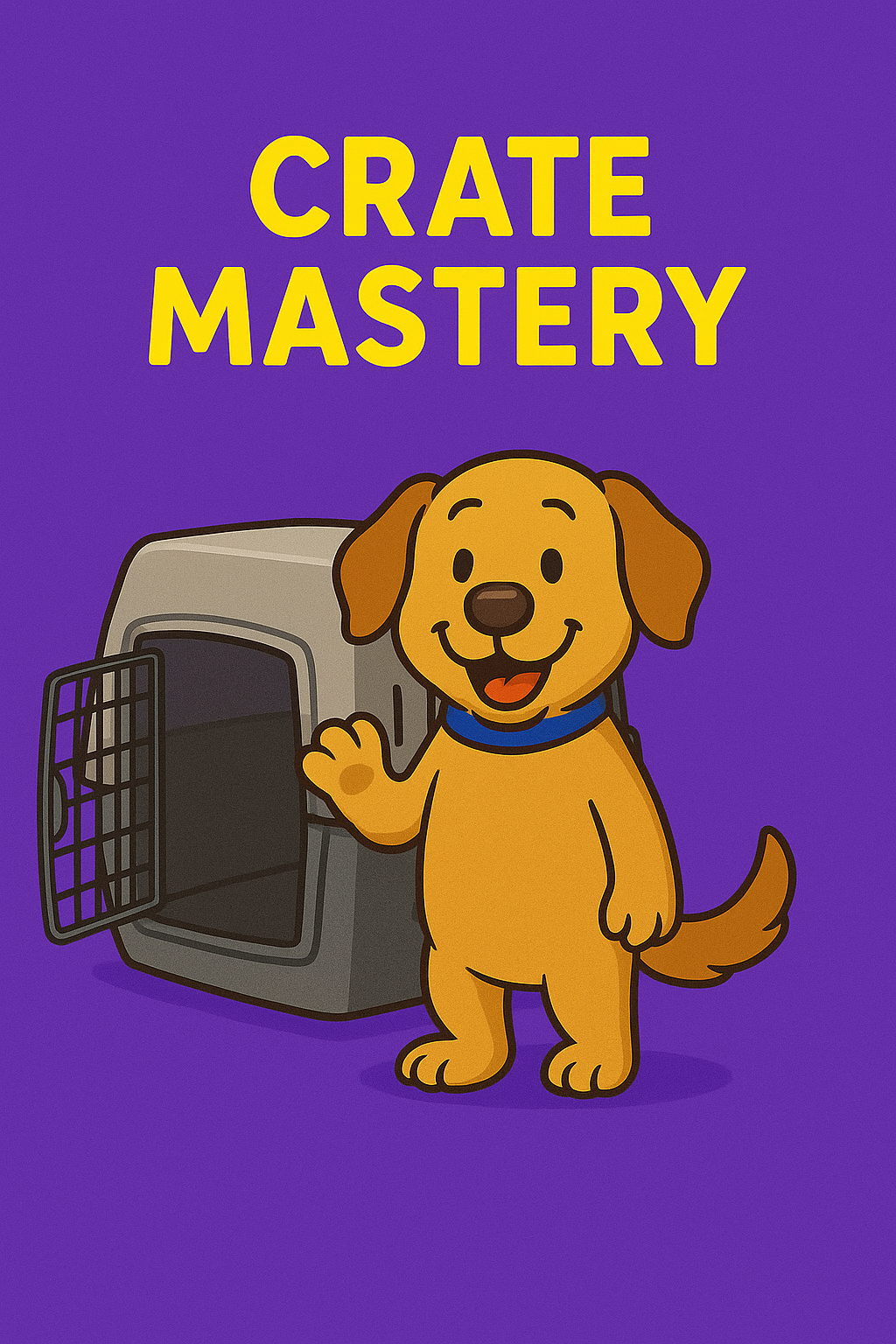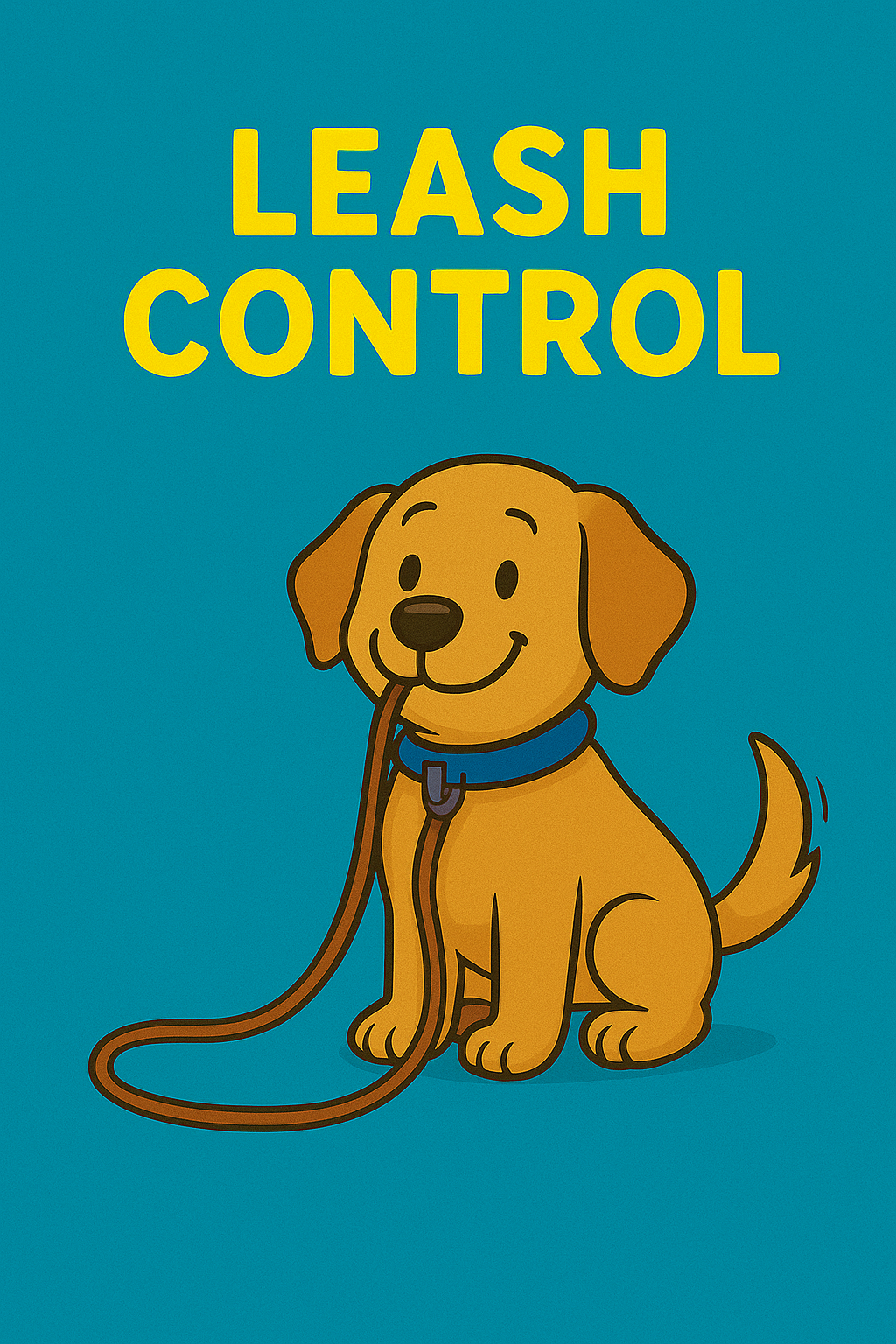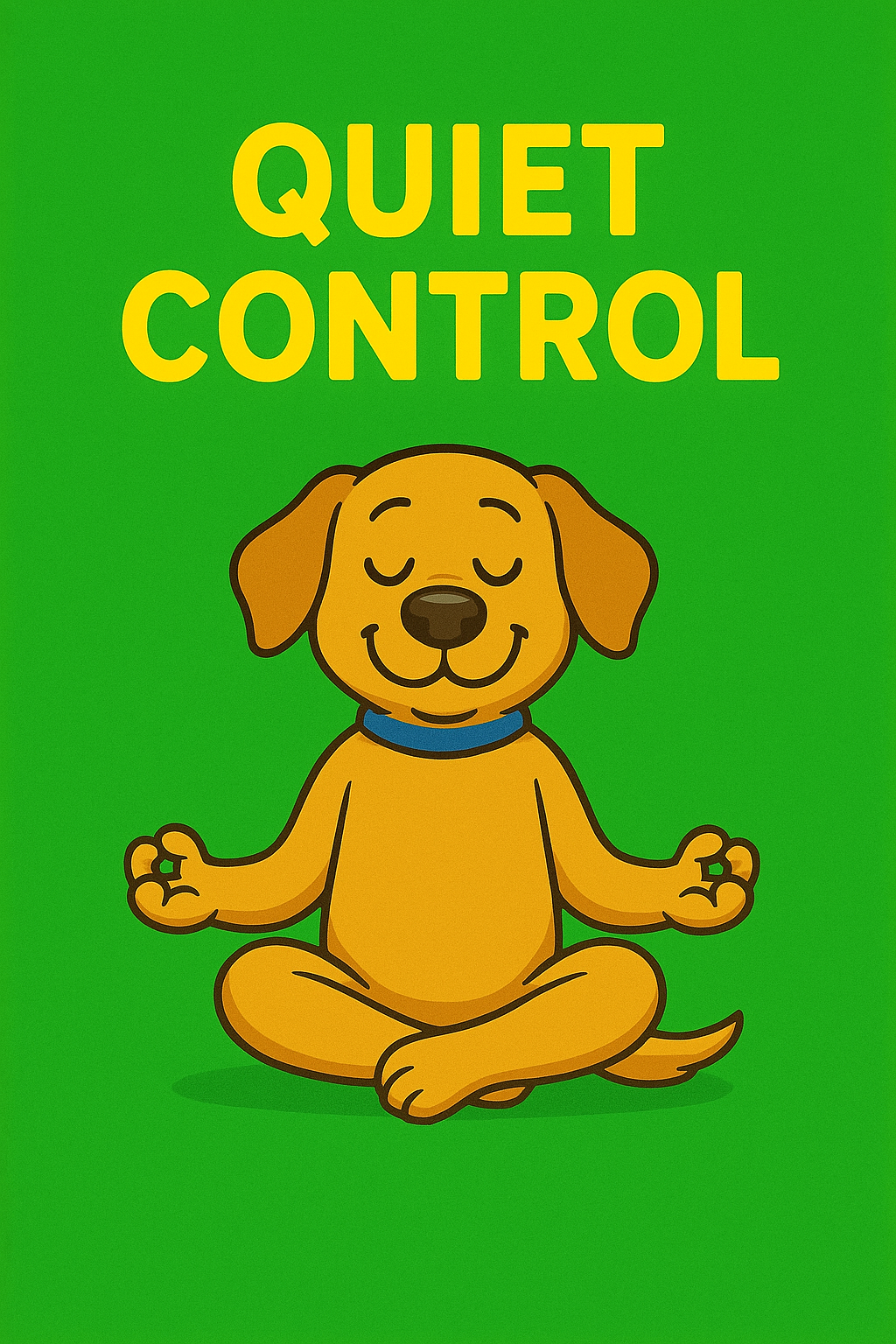DO YOU WANT A WELL-BEHAVED DOG?
Get LIVE, one-on-one training sessions with Kyle Romano - working with 100+ clients annually
FREE ADVANCED TRAINING
Videos, eBooks, Guides, Templates, Downloads & more to help you succeed:

Complete guide to crate training, separation anxiety solutions, stopping destructive chewing, excessive barking, and potty training using proven crate methods
Read Free eBookQuiet your dog using crate training and balanced methods
Read Free eBookFREQUENTLY ASKED QUESTIONS
How does live virtual dog training work?
LIVE training sessions are conducted via Zoom where I personally guide you through training your dog in real-time. You get my full attention and expertise during each session. Sessions are recorded so you can review techniques anytime.
Is live virtual training as effective as in-person?
Live virtual training is often MORE effective because your dog learns in their natural environment where they feel comfortable and safe. Plus, you get my full attention and personalized guidance during each session.
What if my dog has behavioral issues?
I specialize in dogs with behavioral challenges. During our free consultation, I'll assess if virtual training is right for your specific situation.
Complete Guide to Dog Training Online
Answers to the most searched dog training questions - your comprehensive resource for all dog training needs
How to Stop Dog Pulling on Leash
Leash pulling is one of the most common dog training problems. Learn proven techniques to stop your dog from pulling and enjoy stress-free walks.
- Stop dog pulling leash
- Dog leash training
- Loose leash walking
- How to walk dog properly
How to Potty Train a Dog
Master house training with our comprehensive potty training guide. Learn the most effective methods for successful potty training.
- How to potty train puppy
- House training dog
- Potty training schedule
- Dog housebreaking
How to Stop Dog Barking
Excessive barking is a top concern for dog owners. Learn how to stop your dog from barking excessively and restore peace to your home.
- Stop dog barking
- Excessive barking solutions
- Dog barking problems
- Quiet dog training
How to Stop Dog Jumping
Prevent your dog from jumping on people with our proven training methods. Learn how to teach proper greeting behavior.
- Stop dog jumping
- Dog jumping on people
- Greeting behavior training
- Calm dog greetings
Dog Separation Anxiety Training
Help your dog overcome separation anxiety with our virtual training programs. Learn proven techniques for managing anxiety and stress.
- Dog separation anxiety
- Separation anxiety training
- Dog anxiety solutions
- Calm dog training
How to Stop Dog Chewing
Prevent destructive chewing behavior with our comprehensive training approach. Learn how to redirect your dog's chewing to appropriate items.
- Stop dog chewing
- Destructive chewing
- Dog chewing furniture
- Chew toy training
Dog Recall Training
Master the most important command - reliable recall. Learn how to train your dog to come when called, even with distractions.
- Dog recall training
- Come when called
- Reliable dog recall
- Off leash training
Dog Aggression Training
Address aggressive behavior safely and effectively. Learn professional techniques for managing and reducing dog aggression.
- Dog aggression training
- Aggressive dog behavior
- Dog behavior modification
- Reactive dog training
Free Dog Training Resources
Comprehensive guides, tips, and techniques - everything you need to train your dog successfully
Complete Leash Pulling Solution
FREE GUIDE: Stop leash pulling using balanced training methods that work
- Feed meals on walks for maximum motivation
- Change direction frequently to build attention
- Proper leash pressure techniques
- When and how to use corrections
- Building loose leash walking habits
- Advanced techniques for stubborn pullers
Puppy Potty Training Masterclass
FREE GUIDE: House train your puppy using crate training fundamentals
- Proper crate sizing and setup
- Controlled water intake schedule
- Reward-based outdoor elimination
- Never punish indoor accidents
- Building bladder control naturally
- Common potty training mistakes to avoid
Stop Excessive Barking Guide
FREE GUIDE: Quiet your dog using crate training and balanced methods
- Crate training for calm behavior
- Building dog confidence through structure
- Fair correction techniques
- Environmental management strategies
- Teaching quiet command effectively
- Addressing root causes of barking
Perfect Recall Training System
FREE GUIDE: Train reliable recall using leash-based methods
- Start recall training on leash only
- Retractable leash techniques
- Meal-based motivation strategies
- Low distraction environment setup
- Building distance gradually
- Emergency recall protocols
Separation Anxiety Solution
FREE GUIDE: Help your dog feel comfortable alone using crate training
- Crate introduction and acceptance
- Building independence gradually
- Proper crate usage when leaving
- Establishing leadership through structure
- Trust-building exercises
- Preventing anxiety escalation
Stop Destructive Chewing
FREE GUIDE: Redirect chewing using supervision and structure
- Provide appropriate chew alternatives
- Leash supervision inside the house
- Crate training for unsupervised time
- Environmental management techniques
- Preventing furniture destruction
- Building good chewing habits
Daily Training Tips Library
Quick, actionable tips you can implement today
Tip #1: Meal Time is Training Time
Take 5 minutes to interact with your dog and have them earn their food. This is how you build a true relationship. Dogs that work for their meals respect you more and listen better.
Tip #2: Use All 4 Quadrants
Without all 4 quadrants of operant conditioning, dogs only listen because they WANT to, not because they HAVE to. This is dangerous when your dog is chasing a ball across the street.
Tip #3: Leash Pressure is Essential
Not using leash pressure conditions the dog to only listen when they feel like it. Leash pressure teaches them they HAVE to listen, creating reliability off-leash.
Tip #4: Never Punish Recall
If it takes your dog 2 minutes to come back and you punish them when they finally do, they'll be less likely to listen in the future. Always reward the recall, even if it's late.
Tip #5: Crate Training is Non-Negotiable
Dogs are den animals. As a professional, I would NEVER train a dog without a crate. Would you raise a baby without a crib? The crate provides structure and security.
Tip #6: Load the Marker
Say "YES!" and feed your dog 50 times to teach them the marker means reward. This creates clear communication about exactly when they're getting reinforced.
Tip #7: Control Water Intake
Don't give your dog free access to water. Water only with meals. If you don't know when they're drinking or eating, you're in big trouble with potty training.
Tip #8: HAVE FUN!
The entire relationship with a dog should be based on fun and playing games. If your dog doesn't listen to you, guess what - YOU ARE BORING! Make training enjoyable.
Step-by-Step Training Instructions
Detailed training protocols you can follow at home
Teaching "Sit" Command - Complete Method
Shaping the Behavior
Use food luring to guide your dog into the sit position. Start with an open hand lure where the dog follows food in your hand, then progress to closed hand lure where they work for the "jackpot" of kibble. The dog must be hungry to train effectively.
Naming the Command
Once the dog can repeatedly get into position, add the verbal "sit" command. This is also when you introduce leash pressure - slight upward tension on the leash to guide the head into position. The pressure turns off when they're in the correct position.
Adding Duration
Build duration by gradually increasing how long the dog holds the sit position. Use marker training ("YES!") to communicate exactly when they're getting rewarded. Reward frequently at first, then space out rewards as duration improves.
Proofing the Command
Practice sit around distractions and in different environments. The dog must perform NO MATTER WHAT. This is where balanced training shines - the dog learns they HAVE to listen, not just that they WANT to listen.
Leash Walking Training - Balanced Approach
Meal-Based Motivation
Feed your dog's meals on walks using a treat pouch. When the dog is hungry and you have food, nothing in the environment matters. This creates maximum motivation and focus on you during training sessions.
Direction Changes
Change direction frequently without waiting for the dog. This gives them a small nudge on the collar and teaches them to pay attention to your location at all times. They'll learn to stay close to avoid being left behind.
Leash Pressure Training
Teach the dog to yield to leash pressure. When the leash is tight, the dog is pulling - the handler never puts pressure on the leash. Give slack and POP with a correction when needed. This conditions the dog to HAVE to listen.
Building Reliability
Practice for a month of meals on walks. The dog learns that paying attention to you results in rewards, while pulling results in corrections. This balanced approach ensures reliability both on and off leash.
Free Video Training Library
Watch Kyle demonstrate training techniques in action
Video Coming Soon
[Kyle - what's the first video you want to create?]
[Kyle - what will this video cover?]
Video Coming Soon
[Kyle - what's the second video topic?]
[Kyle - what will this video demonstrate?]
Video Coming Soon
[Kyle - what's the third video topic?]
[Kyle - what technique will this show?]
The 4 Quadrants of Operant Conditioning
Understanding balanced dog training - why all 4 quadrants are essential
Positive Reinforcement (+R)
ADDING something to make behavior MORE LIKELY
Example: Giving treats or praise after your dog sits
Negative Reinforcement (-R)
SUBTRACTING something to make behavior MORE LIKELY
Example: Turning off leash pressure after your dog sits
Positive Punishment (+P)
ADDING something to make behavior LESS LIKELY
Example: Verbal "NO" and leash correction when dog barks
Negative Punishment (-P)
SUBTRACTING something to make behavior LESS LIKELY
Example: Removing your attention by turning away when dog jumps
Why Balanced Training Works
Using only positive reinforcement means your dog only listens because they WANT to, not because they HAVE to. This is dangerous when your dog is chasing a ball across the street and you need their attention immediately. Balanced training using all 4 quadrants creates reliable dogs who understand they MUST listen, regardless of distractions or environment.
Virtual Dog Training Services Available Nationwide
Professional online dog training serving clients across Florida and nationwide
South Florida
Virtual dog training services for Miami, Fort Lauderdale, West Palm Beach, and surrounding areas
- Miami dog training
- Fort Lauderdale dog training
- West Palm Beach dog training
- Boca Raton dog training
Central Florida
Online dog training serving Tampa, Orlando, and Central Florida communities
- Tampa dog training
- Orlando dog training
- St. Petersburg dog training
- Clearwater dog training
North Florida
Virtual training services for Jacksonville, Gainesville, and North Florida
- Jacksonville dog training
- Gainesville dog training
- Tallahassee dog training
- Pensacola dog training
Nationwide
Virtual dog training available anywhere in the United States via Zoom
- Online dog training nationwide
- Virtual dog training anywhere
- Remote dog training services
- Professional online dog trainer
Why Virtual Training Works Better
Comfort Zone Training
Your dog learns in their familiar environment, reducing anxiety and improving retention. No strange places or overwhelming distractions.
Flexible Scheduling
No travel time, no weather concerns. Schedule sessions that fit your busy lifestyle, including evenings and weekends.
Better Observation
I can see your dog's behavior patterns in their natural environment, leading to more accurate assessments and personalized training plans.
Cost Effective
No travel fees, no facility costs. More training sessions for the same budget, plus recorded sessions you can review anytime.
How Virtual Dog Training Works
Simple 3-step process that delivers real results from your home
Free Consultation
15-minute video call to assess your dog's needs and ensure we're the right fit. No pressure, just honest assessment.
Virtual Training Sessions
Weekly 1-hour Zoom sessions where I guide you through training your dog. Sessions are recorded so you can review anytime.
Real Results
Your dog learns faster because they're training in their natural environment. You get a well-behaved companion who listens.
Why Virtual Training Works Better
Natural Environment
Your dog learns where they live, creating stronger associations
Better Observation
I see your dog's real behavior patterns, not how they act in a strange place
Recorded Sessions
Review techniques anytime. Never miss a training tip or forget a method
Cost Effective
No travel fees, no facility costs. More training for your money
Free Dog Training Resources
Comprehensive guides, tips, and techniques - everything you need to train your dog successfully
Complete Leash Pulling Solution
FREE GUIDE: Stop leash pulling using balanced training methods that work
- Feed meals on walks for maximum motivation
- Change direction frequently to build attention
- Proper leash pressure techniques
- When and how to use corrections
- Building loose leash walking habits
- Advanced techniques for stubborn pullers
Puppy Potty Training Masterclass
FREE GUIDE: House train your puppy using crate training fundamentals
- Proper crate sizing and setup
- Controlled water intake schedule
- Reward-based outdoor elimination
- Never punish indoor accidents
- Building bladder control naturally
- Common potty training mistakes to avoid
Stop Excessive Barking Guide
FREE GUIDE: Quiet your dog using crate training and balanced methods
- Crate training for calm behavior
- Building dog confidence through structure
- Fair correction techniques
- Environmental management strategies
- Teaching quiet command effectively
- Addressing root causes of barking
Perfect Recall Training System
FREE GUIDE: Build reliable recall using leash-based training methods
- Start with retractable leash in low distraction
- Load treat pouch with kibble meals
- Distance training with food bowl technique
- Never punish recall - always reward
- Building duration and distance gradually
- Proofing recall around distractions
Separation Anxiety Solution
FREE GUIDE: Solve separation anxiety using proper crate training
- Crate training as the #1 solution
- Building independence gradually
- Never leave anxious dog in charge of house
- Creating safe space for your dog
- Building trust through structure
- Professional techniques for severe cases
Stop Destructive Chewing
FREE GUIDE: End destructive chewing through proper management
- Provide appropriate chew toys
- Never leave dog unattended free roaming
- Use leash inside the house
- Crate when not supervised
- Redirect to appropriate items
- Building good chewing habits
Daily Training Tips Library
Professional tips and techniques from Kyle Romano's training experience
Tip #1: Meal Time is Training Time
Take 5 minutes to interact with your dog and have them earn their food. This builds a true relationship and makes training more effective.
Tip #2: Use All 4 Quadrants
Balanced training uses positive reinforcement, negative reinforcement, positive punishment, and negative punishment. This creates dogs that listen because they HAVE to, not just because they WANT to.
Tip #3: Leash Pressure is Essential
Without leash pressure, dogs only listen because they want to. This is dangerous when your dog is chasing a ball across the street and you need their attention.
Tip #4: Never Punish Recall
If it takes your dog 2 minutes to recall and you punish them when they eventually come back, they'll be less likely to listen in the future.
Tip #5: Crate Training is Non-Negotiable
Dogs are den animals. Get them a crate. As a professional, I would NEVER train a dog without a crate. Would you raise a baby without a crib?
Tip #6: Load the Marker
Teach your dog that "YES!" means they're getting rewarded. Say "YES!" and feed them from your hand 50 times. They'll start to expect food to follow the sound.
Tip #7: Control Water Intake
Don't give your dog free access to drink as much water as they please. Water only with meals. If you don't know when they're drinking water or eating, you're in big trouble.
Tip #8: HAVE FUN!
The entire relationship with a dog should be based on fun and playing games. If your dog doesn't listen to you, guess what - YOU ARE BORING!
Step-by-Step Training Instructions
Detailed protocols for teaching essential commands using balanced training methods
Teaching 'Sit' Command - Complete Method
Step 1: Shaping the Behavior
Take food (dog needs to be hungry!) and lure them into position. Use an open hand lure where the dog eats out of your hand as they move.
Step 2: Naming the Command
Once the dog can repeatedly get into position, name the command "Sit!" This is also when you add leash pressure - slight tension in the direction you need the dog's head to go.
Step 3: Adding Leash Pressure
Pull up gently on the leash to guide the dog into sit position. Once they're in position, the leash pressure turns off.
Step 4: Proofing the Command
Make sure they do what's expected NO MATTER WHAT. Work on the behavior around distractions and in different environments.
Leash Walking Training - Balanced Approach
Step 1: Meal-Based Motivation
Feed meals on walks! If your dog is hungry when they're on walks and you have food, nothing in the environment matters because they're hungry and you have food.
Step 2: Direction Changes
Change direction OFTEN. Start walking in a direction and change directions. Don't wait for the dog - this gives them a little nudge on the collar.
Step 3: Building Attention
The dog will say "oh shoot! my owner is over there I need to catch up!" This causes the dog to pay attention to where you are at all times.
Step 4: Leash Pressure Training
If the leash is tight, the dog is pulling. The handler never puts pressure on the leash. Give slack and POP. Use proper leash corrections with video demonstration.
Free Video Training Library
Watch Kyle Romano demonstrate professional training techniques
Video Coming Soon
Professional training demonstration
Video Coming Soon
Step-by-step technique guide
Video Coming Soon
Advanced training methods
The 4 Quadrants of Operant Conditioning
Understanding balanced training - why all 4 quadrants are essential for effective dog training
Positive Reinforcement
ADDING something to make behavior MORE LIKELY
Example: Giving treats or praise after they sit
Negative Reinforcement
SUBTRACTING something to make behavior MORE LIKELY
Example: Turning leash pressure off after they sit
Positive Punishment
ADDING something to make behavior LESS LIKELY
Example: Verbal "NO" and leash correction when they bark
Negative Punishment
SUBTRACTING something to make behavior LESS LIKELY
Example: Removing your attention by turning around when they jump
Why Balanced Training Works
Using all 4 quadrants creates dogs that listen because they HAVE TO, not just because they WANT TO. This is essential for safety and reliability in real-world situations.
About Me
Your Personal Professional
Hi, I'm Kyle Romano. With 5 years of intensive dog training experience and over 100+ happy clients trained virtually, I've proven that online training sessions deliver superior results compared to traditional in-person methods.
My philosophy is simple: structure for the dog equals freedom. Dogs crave rules and boundaries to feel secure. I'm a balanced trainer focused on foundational training that gives your dog the structure they need to thrive.
I've helped hundreds of dogs with common behavioral issues—from dogs that won't stop barking and jumping on guests, to dogs that pull on leash and ignore basic commands, all the way to dogs about to be euthanized due to severe aggression. Most clients see significant improvement within the first few sessions, with complete transformation by the end of their package.
What clients typically say: "Kyle really understands dogs and helped us communicate better with our dog. The sessions were practical and we saw results quickly." I hold you accountable between sessions and keep you reminded of what needs to get done to see optimal results.
Experience & Results
- 5 Years Professional Dog Training Experience
- 100+ Happy Clients Trained Virtually
My Training Philosophy
"Simple solutions for real problems" - Every dog and family is different, so I customize my approach to fit your specific situation. I focus on building a strong relationship between you and your dog through clear communication and consistent boundaries. My methods are straightforward, practical, and designed to solve the actual problems you're facing—not just teach tricks. The goal is to install the leadership that dogs crave and build their confidence, creating a calm, secure companion.

Training Packages
Choose the perfect package for your dog's needs. All sessions are conducted via Zoom with follow-up support.
Lifetime Mastery Program
- Everything in Off-Leash Mastery
- Lifetime 1-on-1 Support Calls
- Priority Scheduling (24/7 Access)
- Custom Training Equipment Package ($500 value)
- Monthly Group Training Sessions
- Exclusive Access to Advanced Techniques
- Personal Training Plan Customization
- Emergency Behavior Consultation
- Lifetime Access to Video Library
- Private Facebook Group Access
- Quarterly Progress Reviews
- Guaranteed Results or Full Refund
- BONUS: 2 Additional Dogs FREE
- BONUS: Family Training Sessions
- BONUS: Lifetime Equipment Upgrades
Only 3 spots available in 2025 - Exclusive access to Kyle's personal attention
Off-Leash Mastery
- Foundation Training + 6 Additional Sessions
- Complete Off-Leash Training
- Advanced Recall Training
- Distraction Training
- You Learn HOW to Train Off-Leash
- Advanced Commands
- Real-World Application
- Long-term Training Skills
- BONUS: Free eBook Library ($200 value)
- BONUS: 30-Day Follow-up Support
- BONUS: Training Equipment Guide
Foundation Training
- 6 Virtual Sessions (60 min each)
- 3 Weeks, 2 Sessions Per Week
- Loose Leash Walking
- Crate Training
- Place Training
- Well-Behaved in House
- Basic Commands & Structure
- For Mild-Mannered Dogs
- BONUS: Free Training Guide
- BONUS: Email Support
Aggression & Reactivity
- Add-on to Any Package
- Aggressive Dog Training
- Leash Reactivity Solutions
- Behavior Modification
- Safety Protocols
- Consultation Required
- Must Disclose Issues
- Professional Assessment
- BONUS: Safety Equipment Guide
All packages include a free 15-minute consultation to assess your dog's needs and ensure the right fit.
Puppy Training Specialists
Start your puppy's journey right with our specialized virtual puppy training programs.
Why Virtual Puppy Training Works
Puppies learn best in their home environment where they feel safe and secure. Virtual training allows me to observe your puppy's natural behaviors and create a training plan that works with your family's daily routine.
Home Environment
Training happens where your puppy lives, creating stronger associations and faster learning.
Family Involvement
Everyone in the family can participate and learn consistent training methods.
Session Recording
Review training sessions anytime to reinforce techniques between appointments.
Puppy Training Programs
Puppy Foundation Training
Same as Foundation Package - $1,200
- 6 Virtual Sessions (60 min each)
- 3 Weeks, 2 Sessions Per Week
- Puppy-Specific Adaptations
- House Training Foundation
- Crate Training
- Basic Commands & Structure
- Bite Inhibition
- Socialization Guidance
Why Puppies Thrive with Virtual Training
- Learn in their safe home environment
- No exposure to unknown dogs or diseases
- Family can participate in every session
- Consistent training in familiar surroundings
- Reduced stress = faster learning
Real Results From Real Clients
See the transformation our virtual training delivers
Real results from real families who chose virtual training.
"Ready for your 5-star review here! Kyle's virtual training approach exceeded all expectations. My dog transformed completely in just 3 weeks."
"Ready for your 5-star review here! The convenience of virtual training combined with Kyle's expertise made this the best investment in my dog's future."
"Ready for your 5-star review here! Kyle's balanced approach and virtual training method gave us the results we never thought possible."
Frequently Asked Questions
Everything you need to know about virtual dog training.
How do I stop my dog from pulling on the leash?
Leash pulling is one of the most common dog training problems. Our virtual dog training sessions teach you proven techniques including positive reinforcement, proper equipment selection, and consistent training methods. Most dogs show improvement within 2-3 sessions.
How do I potty train my puppy?
Potty training success comes from establishing a consistent schedule, using positive reinforcement, and understanding your puppy's signals. Our virtual puppy training program covers house training, crate training, and potty training schedules that work.
How do I stop my dog from barking excessively?
Excessive barking can be managed by identifying the root cause (boredom, fear, attention-seeking) and using appropriate training techniques. Our online dog behavior training addresses barking problems through positive reinforcement and environmental management.
How do I stop my dog from jumping on people?
Jumping is often excitement-driven behavior. Our virtual training teaches you to ignore the jumping behavior and reward calm greetings. We also work on alternative behaviors like sitting when people arrive.
How do I handle my dog's separation anxiety?
Separation anxiety requires gradual desensitization and creating positive associations with alone time. Our virtual dog training sessions help you develop a systematic approach to reduce anxiety and build your dog's confidence.
How do I stop my dog from chewing everything?
Destructive chewing is often due to boredom, teething, or anxiety. Our training focuses on providing appropriate chew toys, increasing mental stimulation, and teaching your dog what's acceptable to chew.
Why won't my dog come when I call?
Reliable recall is essential for off-leash freedom. Our virtual training teaches you to make coming when called a positive experience, practice in distraction-free environments first, and use high-value rewards to build a strong recall.
How can I stop my dog from being aggressive?
Dog aggression requires professional assessment and careful management. Our virtual aggressive dog training addresses the root causes, teaches alternative behaviors, and helps you manage triggers safely. For severe cases, we may recommend additional resources.
What's the best age to start training my puppy?
Puppy training can begin as early as 8 weeks old. Early training establishes good behavior patterns and prevents unwanted habits. Our virtual puppy training program is specifically designed for young dogs and covers socialization, basic commands, and house training.
How long will it take to train my dog?
Training duration varies by dog and goals. Our Foundation Training program (6 sessions over 3 weeks) typically shows significant improvement in basic obedience and house manners. More complex behaviors may require additional sessions or specialized programs.
Ready to Transform Your Dog?
Book your free consultation and see why virtual training works better
Ready to transform your dog's behavior from the comfort of your home?
Book Your Free Consultation
Schedule a 15-minute virtual consultation to discuss your dog's needs and see if virtual training is right for you.
Schedule Online
Book directly through our calendar
Call or Text
Your Phone Number
kyle@kyleromanodogtraining.com
100% Virtual Training
All sessions conducted via Zoom from the comfort of your home


